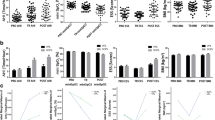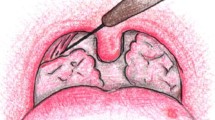Abstract
Snoring is the most obvious symptom of sleep-disordered breathing (SDB). Vibratory sound usually originates from the pharynx; however, in some circumstances, the narrowing of glottic structures can also cause nighttime breathing noise. This clinical study investigated the role of laryngeal obstruction in patients with SDB. Nine female patients with paralysis of bilateral vocal folds were enrolled in this study. All the patients received unilateral laser arytenoidectomy as the only treatment. Nocturnal polysomnography (PSG) was performed at baseline and 6 months after the operation. Parameters of PSG including the respiratory disturbance index (RDI) and snoring index (SI) were recorded, as well as the subjective Epworth Sleepiness Scale (ESS). Before surgery, six patients (66.6%) were identified as having obstructive sleep apnea (OSA, RDI>5). After the operation, the SI improved significantly (P=0.02). The RDI (P=0.07) and ESS (P=0.11) showed no significant improvement. The success rate of surgery in OSA patients was 66% (4/6) according to the criteria of a greater than 50% reduction of the preoperative RDI and less than 20 events per hour. The mechanism, outcomes and causes of failure are discussed in this unusual larynx-related SDB.




Similar content being viewed by others
References
Anonsen C (1990) Laryngeal obstruction and obstructive sleep apnea syndrome. Laryngoscope 100:775–778
Chen NH, Johns MW, Li HY, Chu CC, Liang SC, Shu YH, Chuang ML, Wang PC (2002) Validation of a Chinese version of the Epworth Sleepiness Scale. Qual Life Res 11:817–821
Choi SS, Tran LP, Zalzal GH (1999) Airway abnormalities in patients with Arnold-Chiari malformation. Otolaryngol Head Neck Surg 121:720–724
Coleman JA (2003) Pathophysiology of snoring and obstructive sleep apnea: airway dynamics. In: Fairbanks DNF, Mickelson SA, Woodson BT (eds) Snoring and obstructive sleep apnea, 3rd edn. Williams and Wilkins, Philadelphia, p 19
Gillespie MB, Flint PW, Smith PL, Eisele DW, Schwartz AR (1995) Diagnosis and treatment of obstructive sleep apnea of the larynx. Arch Otolaryngol Head Neck Surg 121:335–339
Golz A, Goldenberg D, Westman ST (2000) Laser partial epiglottidectomy as a treatment for obstructive sleep apnea and laryngomalacia. Ann Otol Rhinol Laryngol 109:1140–1145
Hoffstein V (2000) Snoring. In: Kryger MH, Roth T, Dement WC (eds) Sleep medicine, 3rd edn. Saunders, Philadelphia, p 813
Johns MW (1991) A new method for measuring daytime sleepiness: the Epworth Sleepiness Scale. Sleep 14:540–545
Li HY, Fang TJ, Lin JL, Lee ZL, Lee LA (2002) Laryngomalacia causing sleep apnea in an osteogenesis imperfecta patient. Am J Otolaryngol 23:378–381
Purser S, Iriving L, Marty D (1994) Redundant supraglottic mucosa in association with obstructive sleep apnea. Laryngoscope 104:114–116
Riley RW, Powell NB, Li KK, Weaver EM, Guilleminault C (2003) An adjunctive method of radiofrequency volumetric tissue reduction of the tongue for OSAS. Otolaryngol Head Neck Surg 129:37–42
Ruff M, Oakes J, Fischer SR (1987) Sleep apnea and vocal cord paralysis secondary to type 1 Chiari malformation. Pediatrics 80:231–234
Sherrey JH, Megiran D (1980) Respiratory EMG activity of the posterior cricoarytenoid, cricothyroid, and diaphragm muscles during sleep. Respire Physiol 39:355–365
Acknowledgement
The authors thank Heather M. Engleman, Department of Sleep Medicine, Royal Infirmary Edinburgh, for her comments on this paper. We also gratefully acknowledge Professor Neil J. Douglas for his continuous help.
Author information
Authors and Affiliations
Corresponding author
Rights and permissions
About this article
Cite this article
Li, HY., Wang, PC., Hsu, CY. et al. Changes of sleep-disordered breathing after laryngeal surgery in patients with bilateral vocal fold paralysis. Eur Arch Otorhinolaryngol 262, 294–297 (2005). https://doi.org/10.1007/s00405-004-0820-2
Received:
Accepted:
Published:
Issue Date:
DOI: https://doi.org/10.1007/s00405-004-0820-2




